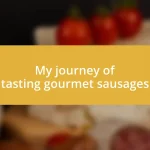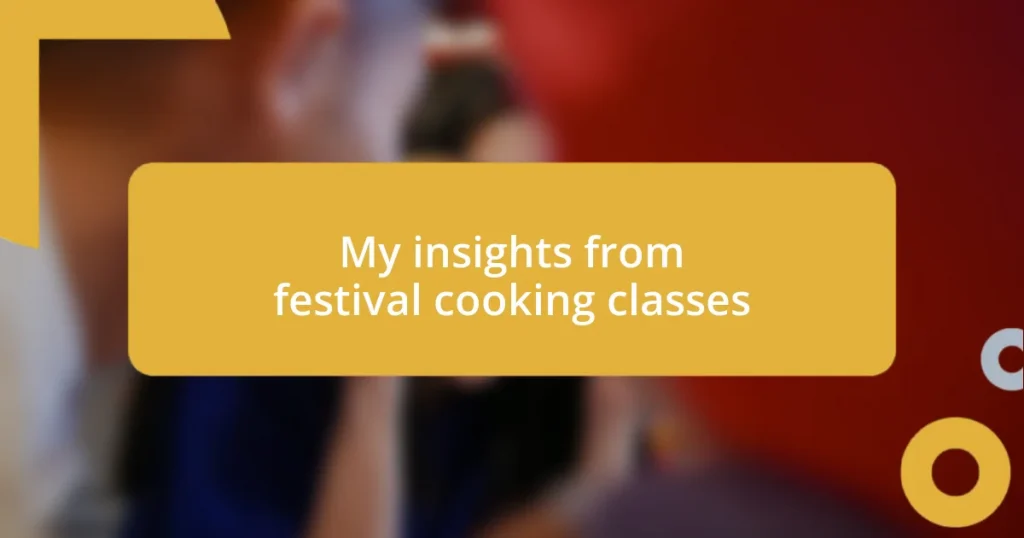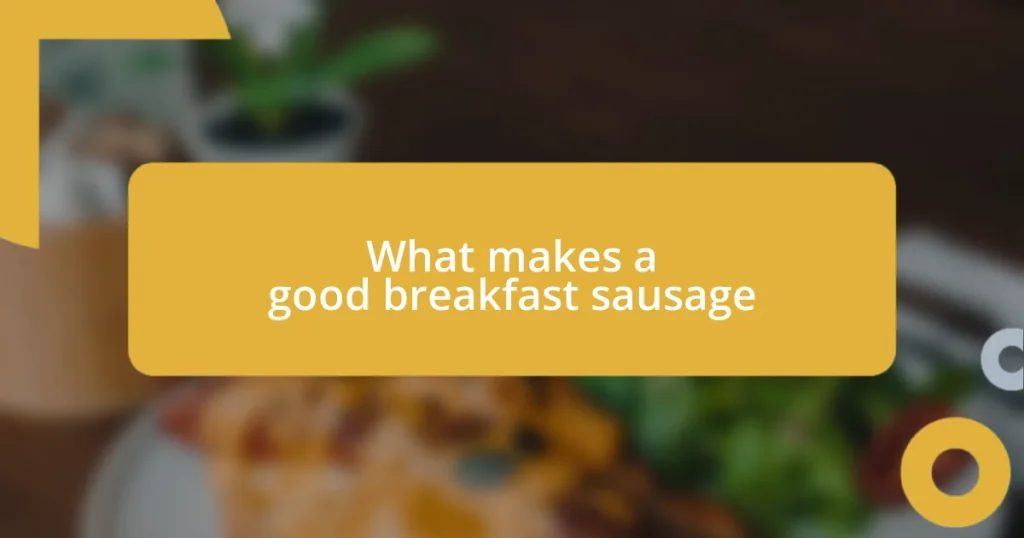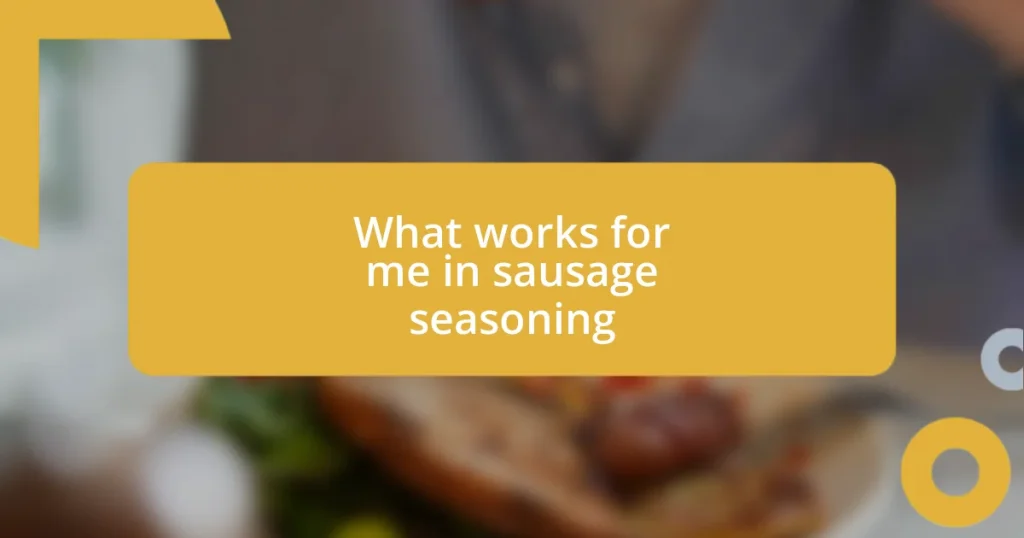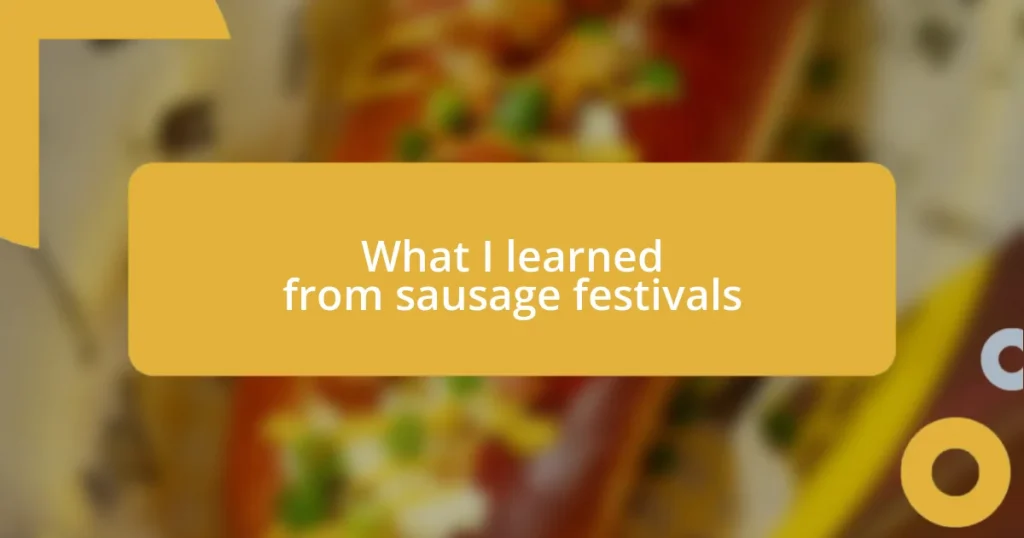Key takeaways:
- Festival cooking classes offer a blend of culinary education and cultural immersion, emphasizing local ingredients and community bonding.
- Hands-on cooking enhances skill development, creativity, and fosters a deeper connection to the food being prepared through shared experiences.
- To replicate festival experiences at home, focus on seasonal ingredients, create a communal cooking atmosphere, and establish personal rituals that enhance enjoyment.
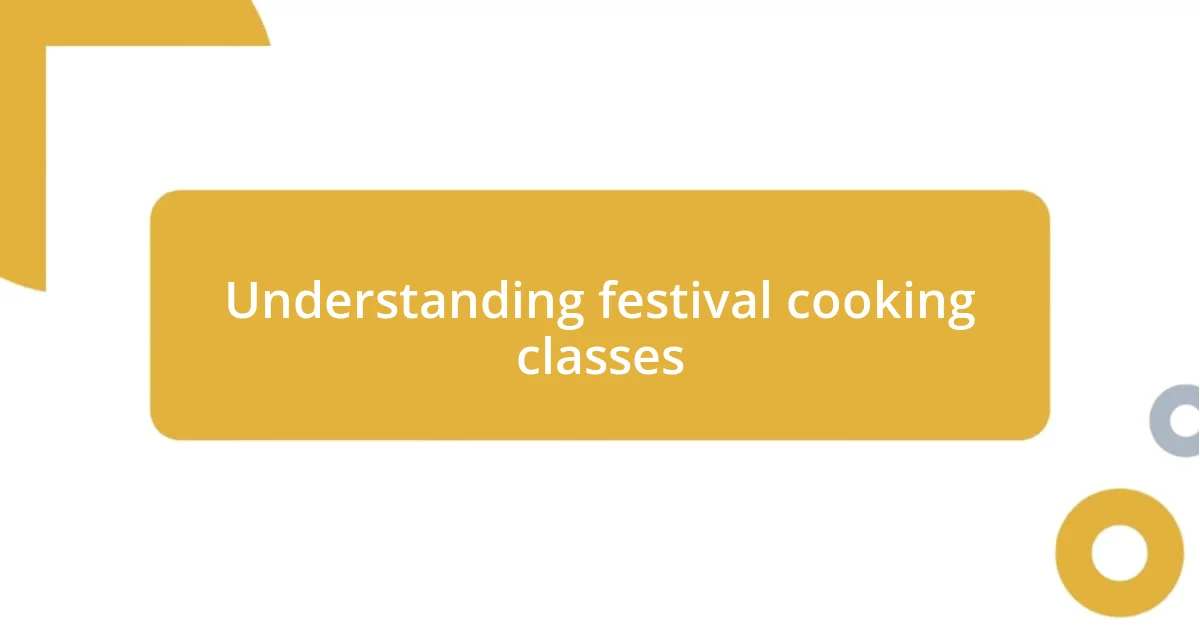
Understanding festival cooking classes
Festival cooking classes are a unique blend of culinary education and cultural celebration. Every time I join one, I’m not just learning recipes; I’m immersing myself in local traditions. Have you ever seen the way a chef expertly prepares a dish that has been passed down through generations? It’s truly mesmerizing.
What I find particularly fascinating is how these classes often emphasize the use of seasonal and local ingredients. During a recent class, we hand-picked fresh herbs from a nearby garden to use in our dishes. The vibrant flavors that emerged were remarkable and really underscored the importance of understanding the origins of what we cook. Don’t you think cooking becomes more meaningful when you can trace the ingredients from farm to table?
These classes also offer a wonderful opportunity to connect with fellow food enthusiasts. I’ve met incredible individuals who share their own stories about food and family traditions. Isn’t it amazing how a shared love for cooking can bring people together in such a profound way? Each class becomes not just a culinary lesson, but a heartwarming experience of camaraderie and community.
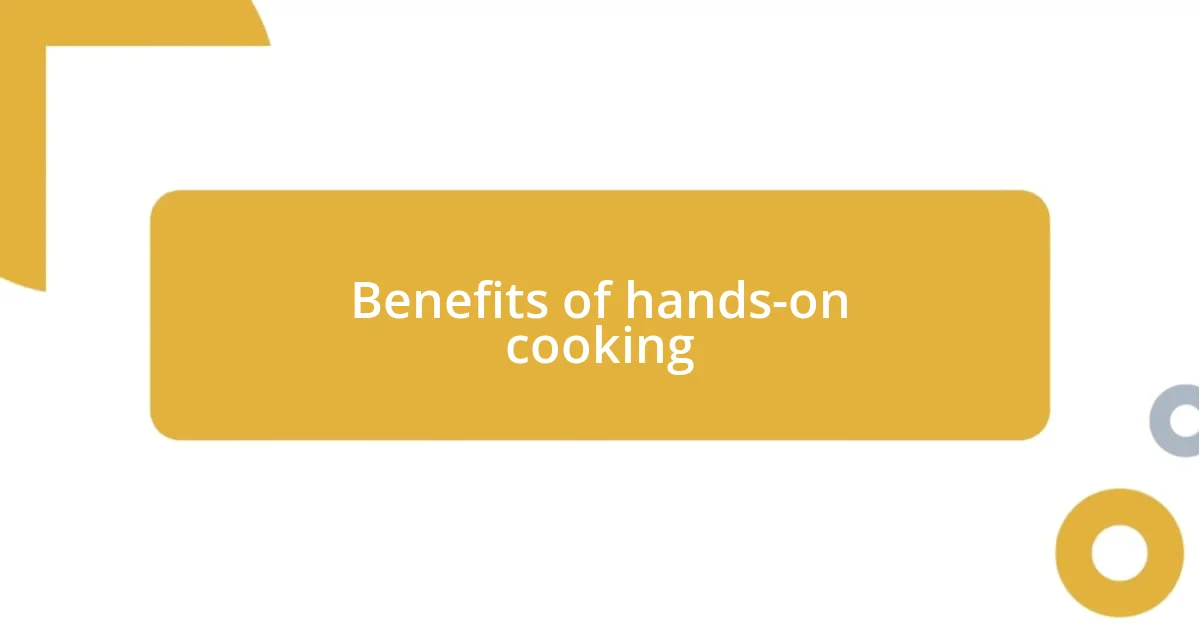
Benefits of hands-on cooking
Hands-on cooking immerses participants in the experience like nothing else. When you chop, sauté, and whisk alongside others, you not only grasp the techniques better but also build muscle memory. I remember the first time I tried kneading dough for fresh bread—it was messy, and my hands were covered in flour, but the sheer joy of transforming simple ingredients into something beautiful was infectious. Can you relate to that moment of creation?
There’s also something incredibly fulfilling about creating a dish from scratch. I once participated in a festival cooking class where we prepared a traditional paella together. As we worked side by side, the conversation flowed, and I could feel the excitement building when we finally set the table. The sense of accomplishment when we tasted our collaborative effort was exhilarating. I find that hands-on cooking builds confidence and encourages experimentation, which is vital in any culinary journey.
Moreover, engaging directly in the cooking process fosters deeper connections between the food and the participant. With each recipe, I feel a story unfolding, as I learn not just the how but the why behind every dish. I recall a moment when a seasoned chef shared the heritage of a recipe while we were preparing it—suddenly, the dish took on a new meaning. It wasn’t just food; it was a cultural narrative that enriched my understanding and appreciation.
| Benefit | Description |
|---|---|
| Skill Development | Hands-on experience develops practical culinary skills through active participation. |
| Creativity | Encourages experimentation, fostering a sense of innovation in cooking. |
| Cultural Connection | Deepens understanding of culinary traditions and their historical context. |
| Community Building | Creates bonds among participants, sharing stories and experiences through food. |
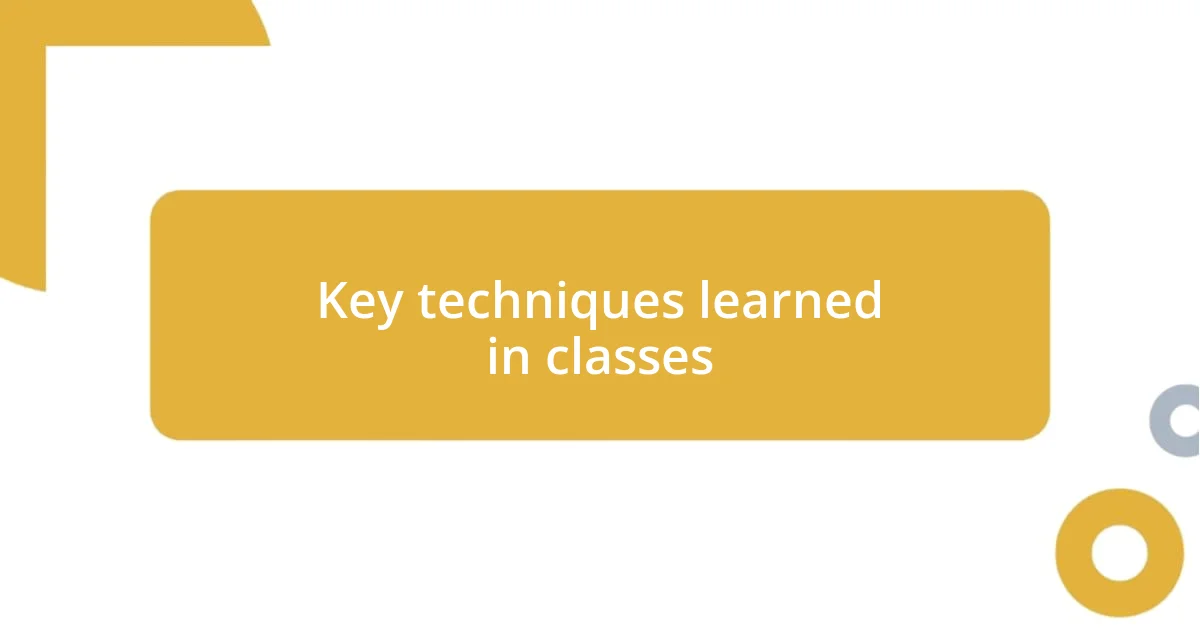
Key techniques learned in classes
In festival cooking classes, I’ve encountered a variety of techniques that transformed my approach to cooking. One memorable lesson was mastering the art of knife skills. I vividly remember how the instructor demonstrated the proper way to hold a knife, turning what once felt intimidating into a fluid and enjoyable process. It gave me a newfound appreciation for the precision involved in preparing ingredients.
Here are some key techniques that stand out from my experience:
- Knife Skills: Learning to chop, dice, and julienne not only improves efficiency but enhances presentation.
- Flavor Balancing: Understanding how to balance acidity, sweetness, and saltiness in dishes helped me create flavors that pop.
- Cooking Methods: Techniques like braising and poaching have added variety to my cooking repertoire, allowing me to explore different textures and tastes.
- Presentation Techniques: I learned how small garnishes and plating strategies can elevate a dish, making it visually enticing.
Another technique that excited me was the concept of layering flavors. I recall a session where we created a rich sauce by sautéing aromatics first—onions, garlic, and spices—as a base. It was almost like painting a canvas, with each ingredient adding depth and complexity. When we tasted the final result, the flavors harmonized beautifully, reminding me that cooking is not just about the individual ingredients but how they come together as a whole. It was a delightful revelation, one that deepened my connection to the dishes I create.
Let’s explore some additional techniques I found impactful:
- Layering Flavors: Building flavors through careful sequencing ensures a richer taste.
- Seasonal Cooking: Focusing on local produce taught me the importance of freshness and seasonality.
- Temperature Control: Learning to monitor heat levels—knowing when to sear and when to simmer—greatly improved my cooking skills.
- Fermentation Basics: I experimented with pickling and fermenting, discovering how these processes can add uniqueness and preservation to dishes.
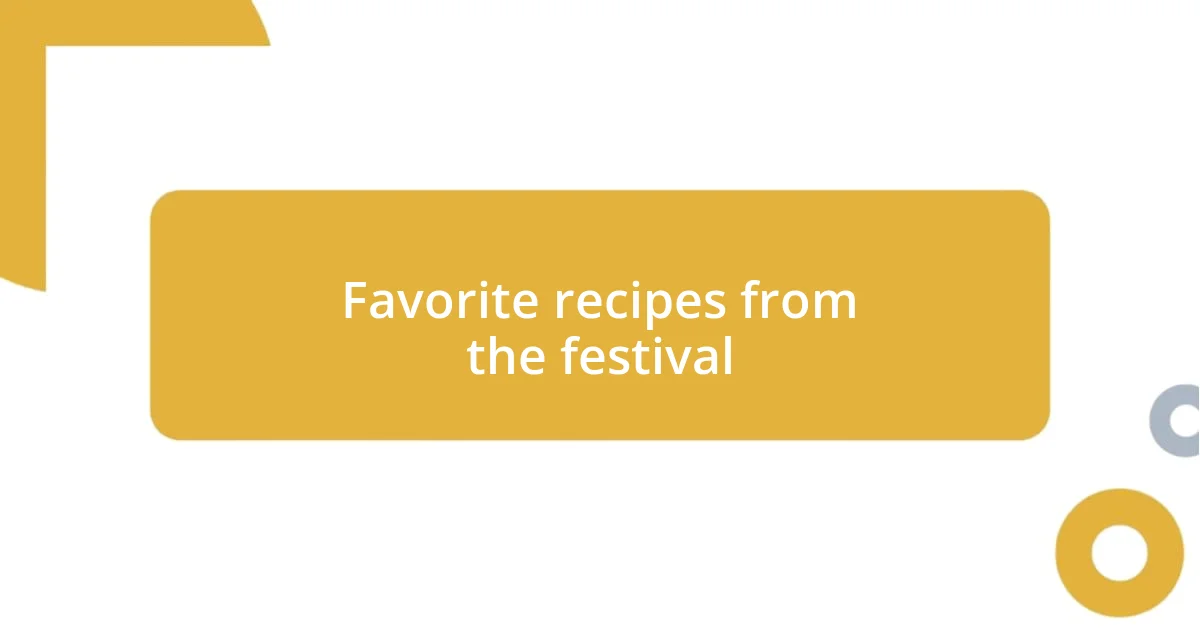
Favorite recipes from the festival
One dish that truly stood out to me at the festival was a mouth-watering butternut squash risotto. I can still picture the creamy texture and the vibrant orange hue. For me, stirring that pot felt almost meditative. The aroma wafting from the sautéing squash and shallots had everyone in the class eagerly anticipating the final taste. Have you ever made a dish that felt like a labor of love? This risotto was definitely that for me, transforming simple ingredients into a cozy, comforting dish.
Another favorite was the vibrant tabbouleh salad we crafted together. The combination of fresh parsley, mint, and the juicy burst of cherry tomatoes made every bite refreshing. It reminded me of sunny afternoons spent picnicking, and I could almost hear laughter in the background as we chopped and mixed. The chef encouraged us to make it our own by adding unexpected ingredients which turned out to be a delightful surprise. Has a cooking class ever inspired you to tweak a recipe? It’s amazing how food can spark creativity and connection.
Lastly, I have to mention the decadent chocolate ganache tart we made. Something about melting chocolate and beating in the cream felt indulgent yet incredibly rewarding. As we poured the glossy mixture into the crust, it felt like we were crafting a piece of art. Sharing that tart with my classmates after we finished was a joy—watching everyone savor each bite was a moment of pure happiness. Have you ever experienced that feeling of sharing something you created? It created a bond among us that transcended just cooking; it was a celebration of our shared effort and love for food.
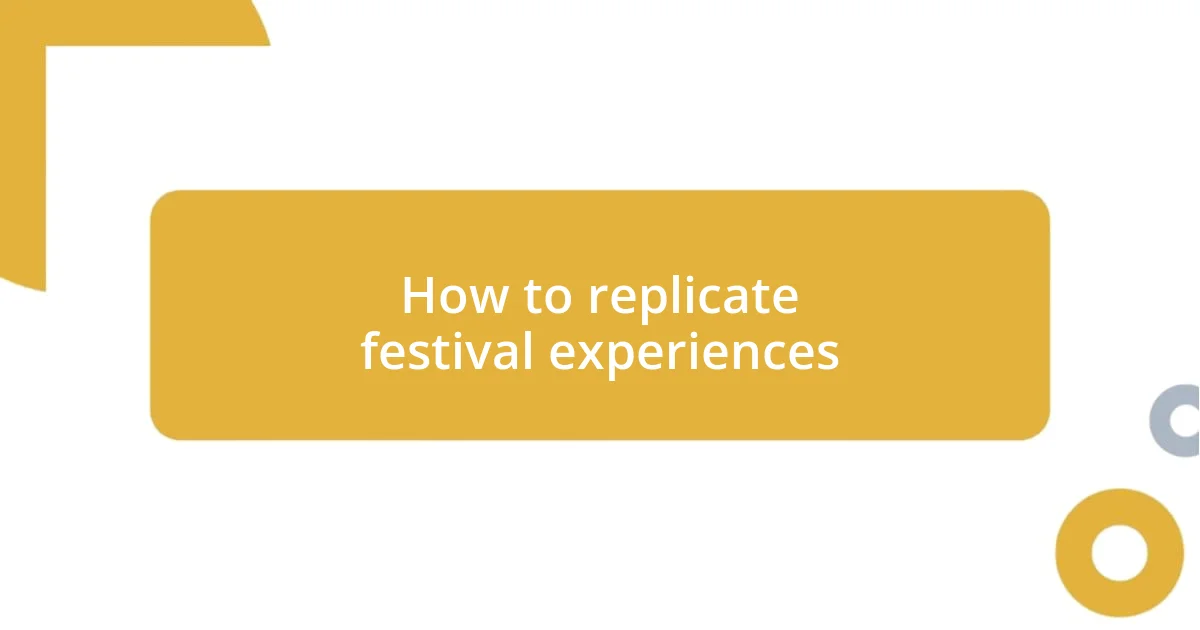
How to replicate festival experiences
To replicate the vibrant experiences of a festival kitchen, I believe the key lies in immersing yourself in the atmosphere. When I returned from the classes, I recreated the energy by inviting friends over for a cooking night. There’s something special about gathering around a kitchen, laughing and sharing stories as we chop vegetables or stir sauces together. Have you ever noticed how the right setting can elevate a cooking experience? It’s all about the joy of community and collaboration.
Another effective way to replicate those festival vibes is to focus on seasonal ingredients. I learned that when you choose locally sourced produce, you not only enhance the flavor but also connect with the essence of the dish. The last time I made a salad with fresh heirloom tomatoes and fragrant basil from my garden, it transported me back to that festival day. It was more than just a meal; it was a celebration of the season. How can you start incorporating seasonality into your meals?
Creating a ritual around your cooking can also deepen the experience. I now have a habit of playing upbeat music or lighting a fragrant candle before I cook. This is reminiscent of the lively atmosphere found in festival kitchens and helps me set a joyful tone. I can’t help but smile when I think of one evening that began with my favorite playlist blasting as I crafted a spicy curry. It felt like I was back at the festival, fully present and engaged. Have you discovered any personal rituals that make your cooking feel more vibrant and festive?








